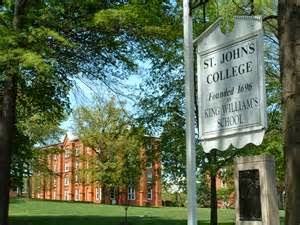The third installment of a mini-series on my path towards a Great Books education and Wyoming Catholic College. Click the links to read Part 1 and Part 2.
Thus far in my ramble I've shown what I felt was missing in the mainstream college experience, and explained why the Great Books approach, in contrast, drew me so deeply. Typical colleges today (and I'm lumping the Ivy Leaguers into this definition) hone their students into a particular career path, with relatively little concern over the actual formation of the students' minds and souls. The Great Books method, on the other hand, challenges its pupils to understand the fundamental truths of their existence. A human being is defined by more than what he or she does for a living.
So I desired this deeper kind of education. But which school to choose? Fortunately I did not have an overwhelming number of options--true Great Books colleges are a novelty nowadays. (I can't tell you how many times I've had to explain to people what they are!) The first school to draw my attention was St. John's College in Annapolis, Maryland.
Of all the college brochures in that oft-mentioned heap in the corner of my room, St. John's was the only one that spoke meaningfully to me. Among the oldest schools in the country (found in 1696), it has retained the classical liberal arts curriculum which most colleges have dropped. Although not religiously affiliated, they respect the integral place of Christianity in Western tradition, studying the Bible and many great Christian works of thought and literature. In class they use the time-honored (and stimulating) method of Socratic discussion. They care about intellectual life--and how it forms you for real life. They are emphatic on the integration of the different disciplines, on the harmony of the whole. I sensed wholeness from St. John's as I had from no other school.
So how did I end up heading west, not east? Why did I forgo the historic school in Annapolis for a tiny, 8-year-old college dropped into the vastness of Wyoming?
Three words: Mountains, horses, and the Catholic Faith.
(To be continued)

No comments:
Post a Comment